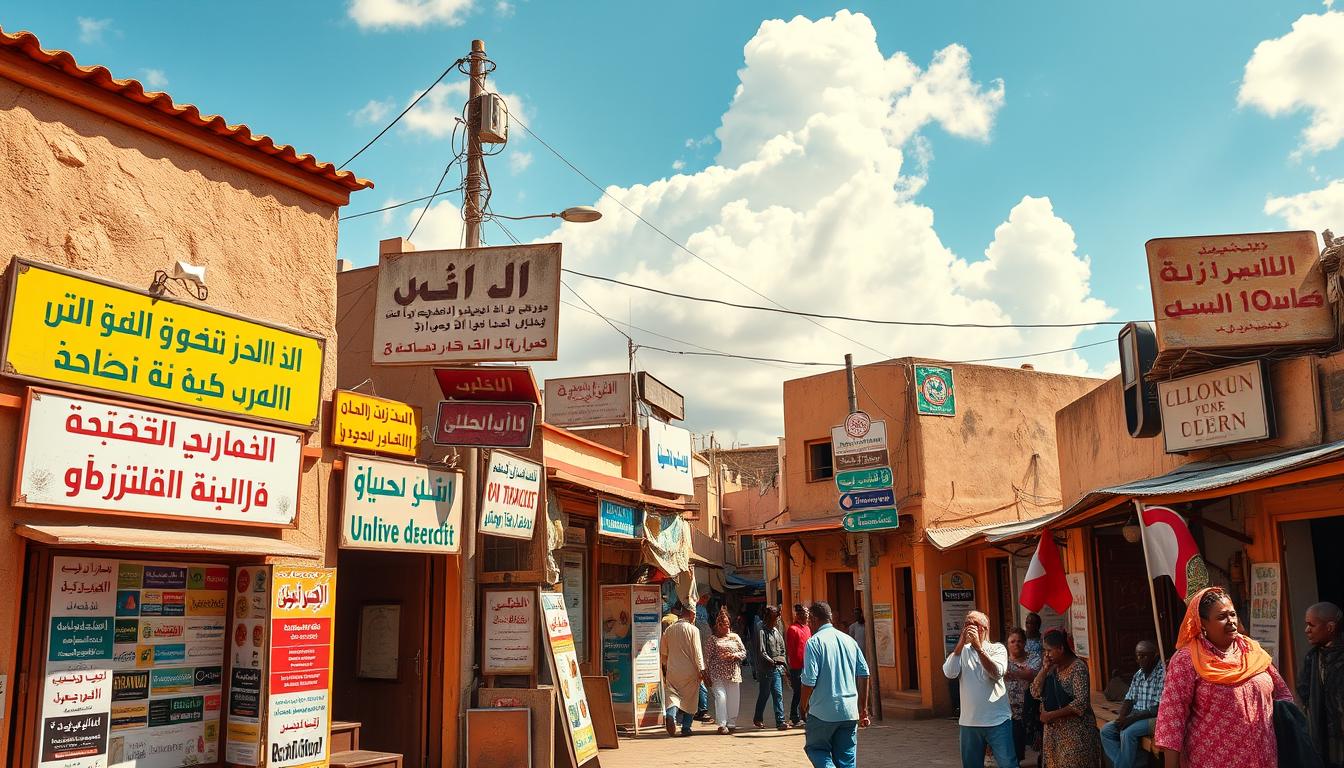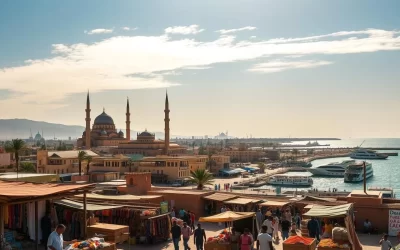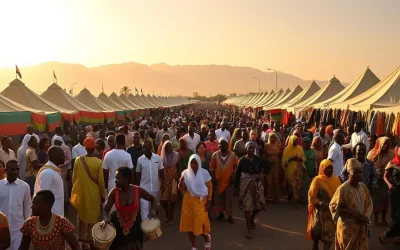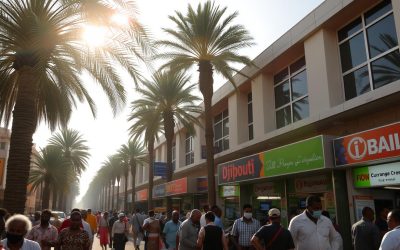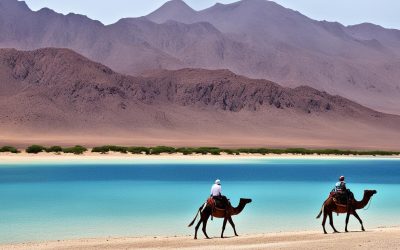Have you ever wondered how a small African nation can communicate across multiple linguistic boundaries? Djibouti presents a fascinating multilingual landscape that challenges traditional language expectations.
In this vibrant Horn of Africa country, language is more than just communication—it’s a complex tapestry of cultural identity. With two official languages and several widely spoken tongues, Djibouti’s linguistic diversity reflects its rich multicultural heritage.
The Djibouti linguistic landscape is dominated by Somali and Afar, which are spoken by the majority of the population, alongside the official languages of French and Arabic. Nearly 60% of Djiboutians speak Somali, while approximately 20% communicate in Afar, creating a unique linguistic ecosystem.
Despite its small size, Djibouti represents a remarkable example of linguistic complexity, where languages intersect and coexist in urban and rural settings across the nation.
Key Takeaways
- Djibouti has two official languages: French and Arabic
- Somali is the most widely spoken language, used by 60% of the population
- The country’s linguistic diversity reflects its multicultural background
- Urban areas showcase more language mixing and interchange
- Language serves as a critical component of Djiboutian cultural identity
Understanding Djibouti’s Linguistic Landscape
Djibouti is a unique place where many languages come together. This creates a rich cultural mix. Its location at the Horn of Africa makes its language scene very interesting.
The languages in Djibouti show its diverse culture. Let’s look at how these languages shape the country.
Language Population Distribution
Djibouti’s languages make a colorful mix. Here’s who speaks what:
- Somali speakers: 585,000
- Afar speakers: 196,000
- French speakers: 453,500
- Arabic speakers: 111,300
Urban vs Rural Language Usage
In Djibouti, city and countryside speak differently. Cities like the capital have more languages. But, rural areas stick to their traditional tongues.
| Language | Urban Usage (%) | Rural Usage (%) |
|---|---|---|
| Somali | 65 | 85 |
| Afar | 25 | 40 |
| French | 45 | 15 |
| Arabic | 35 | 20 |
Djibouti’s languages show how well people adapt. This shows the country’s rich culture and lively communication.
“Language is the road map of a culture. It tells you where its people come from and where they are going.” – Rita Mae Brown
French Language Status and Usage in Djibouti
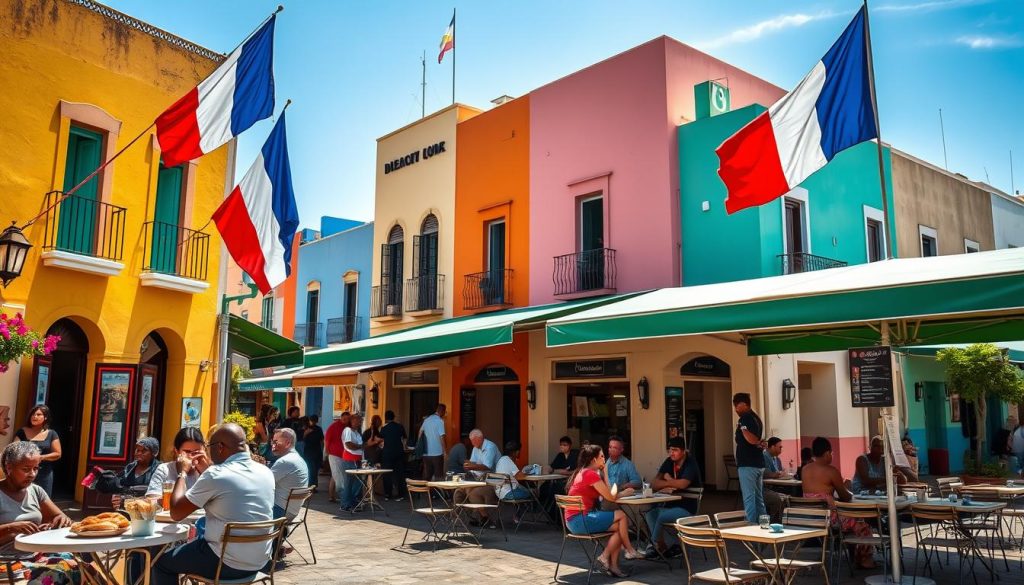
In Djibouti, French is a key official language with a rich history. It came from French colonial times and is now vital in education, government, and business. This shows how French has deeply rooted itself in Djiboutian society.
Looking at the numbers, we see how French is used in Djibouti:
- Approximately 494,000 French speakers in the country
- Around 17,000 Djiboutians speak French as their first language
- Nearly 50% of the population communicates in French regularly
French acts as a lingua franca, connecting different language groups in Djibouti. It opens doors to Francophone networks, making international communication and cultural exchange easier.
“Language is the road map of a culture. It tells you where its people come from and where they are going.” – Rita Mae Brown
In schools, French is the main teaching language. This ensures that young people get strong language skills for their future careers and studies.
Even though Somali and Afar are common local languages, French is still very important. It’s not just for talking; it’s a link to global culture and diplomacy.
| Language Metric | French in Djibouti |
|---|---|
| Total Speakers | 494,000 |
| First Language Speakers | 17,000 |
| Daily Usage Percentage | Approximately 50% |
To truly understand French in Djibouti, we must see its historical and cultural value. It’s a language that keeps growing and changing in Djibouti’s unique language world.
Arabic’s Role as an Official Language
Djibouti’s language scene is full of variety, with Arabic at its core. As the second official language, Arabic is deeply embedded in the country’s culture and communication. It adds a layer of complexity to social and institutional life.
Modern Standard Arabic in Formal Settings
In Djibouti, Modern Standard Arabic (MSA) is the go-to language for official matters. You’ll see it everywhere in:
- Government documents
- Legal cases
- Schools
- Media
Ta’izzi-Adeni Arabic Dialect
The Ta’izzi-Adeni Arabic dialect is the heart of daily talk. About 59,000 locals use this dialect, showing Djibouti’s rich linguistic history.
“Language is the roadmap of a culture. It tells you where its people come from and where they are going.” – Rita Mae Brown
Religious and Cultural Significance
Arabic is more than just a language in Djibouti. It holds deep religious and cultural value. It links communities through shared language roots.
| Arabic Language Aspect | Significance in Djibouti |
|---|---|
| Religious Context | Primary language of Islamic teachings |
| Cultural Identity | Represents historical and spiritual connections |
| Communication Bridge | Connects Djibouti with broader Arabic-speaking world |
The bond between Arabic and Djibouti’s language scene shows language’s power. It’s not just words; it’s a living part of culture and history.
Indigenous Languages: Somali and Afar
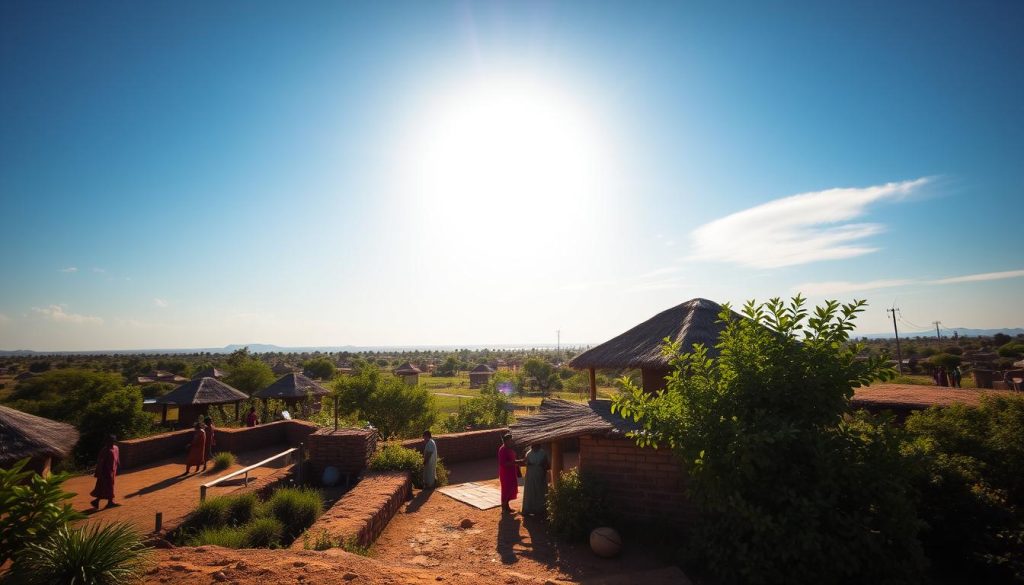
Djibouti’s language scene is filled with Somali and Afar. These languages are at the heart of the nation’s culture. They connect communities through shared words and stories.
About 60% of people speak Somali, and 35% speak Afar. These languages are key to Djiboutian identity.
Somali and Afar belong to the Cushitic branch of the Afro-Asiatic family. They show the ethnic diversity of the Horn of Africa. Each language holds centuries of stories, traditions, and cultural values.
“Language is the road map of a culture. It tells you where its people come from and where they are going.” – Rita Mae Brown
- Somali speakers: Approximately 524,000 individuals
- Afar speakers: Around 306,000 individuals
- Both languages are crucial to Djibouti’s national identity
The Regional Somali Language Academy works hard to keep these languages alive. They help Somali and Afar stay strong, alongside French and Arabic.
Learning about Somali and Afar gives us a peek into Djibouti’s rich culture. Here, language diversity is celebrated as a national strength.
The Evolution of Writing Systems in Djibouti
Linguistics in Djibouti shows a fascinating journey of written communication. It connects old and new ways of writing. The country’s writing systems show a rich cultural mix that keeps growing with new tech.
Writing systems in Djibouti mix old and new influences. You’ll see how language barriers are overcome through changes in writing.
Latin Script Adoption
The Latin script is now the main writing system in Djibouti. It has changed how languages are written and shared. Key points include:
- Somali alphabet: A special Latin script for the Somali language
- Qafar Feera: A Latin-based script for the Afar language
- Higher literacy rates thanks to standard writing systems
Arabic Script Usage
Arabic script is very important in Djibouti’s culture. Interesting facts about its use are:
- It has official status in religious and traditional areas
- Used in about 20 countries worldwide
- It has 28 letters with special sounds
Modern Digital Communications
Digital tech is changing how people talk in Djibouti. New ways to communicate are breaking down old language barriers. This makes talks more lively and open to everyone.
“Language is the road map of a culture. It tells you where its people come from and where they are going.” – Rita Mae Brown
The use of many writing systems shows Djibouti’s strong and flexible language. It shows how the country adapts in a world that’s more connected.
Language in Education and Government
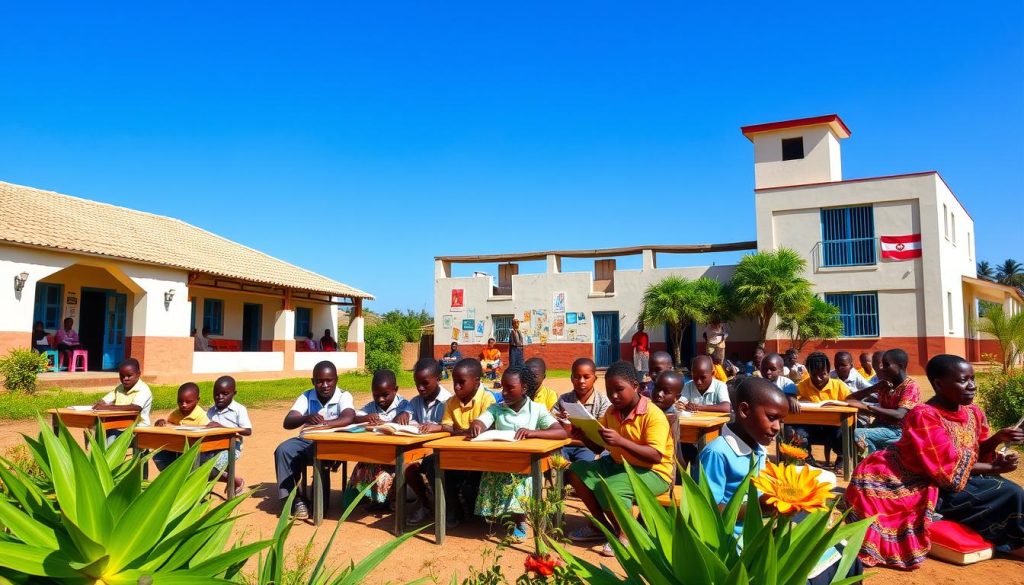
In Djibouti, education and government show a unique mix of languages. The schools mainly teach in French and Arabic. This makes learning and running the government special.
The country’s schools focus on many languages. At the University of Djibouti, French is the main teaching language. Arabic is also important. This helps students learn both official languages well.
“Language is the roadmap of a culture. It tells you where its people come from and where they are going.” – Rita Mae Brown
- Primary schools use French and Arabic as primary instructional languages
- Secondary education continues the multilingual approach
- Government positions require fluency in French
- Indigenous languages are gradually being integrated into educational curricula
Being able to speak French is key for political roles in Djibouti. This shows the country’s history and how it runs things today.
| Education Level | Primary Language of Instruction | Secondary Language |
|---|---|---|
| Primary Schools | French | Arabic |
| Secondary Schools | French | Arabic |
| University of Djibouti | French | Arabic |
The national budget gives over 20% to education. This shows Djibouti’s strong commitment to a multilingual education system. It prepares students for both local and global chances.
Immigrant Languages and Their Impact
Djibouti’s language scene is more than just its official tongues. It’s a rich mix of immigrant groups adding to the country’s cultural diversity. These communities bring their own languages, making Djibouti’s social fabric even more colorful.
Omani Arabic Community
The Omani Arabic community is a big deal in Djibouti. With about 38,900 speakers, they’re key in local business and cultural sharing. Their language adds richness to the country’s communication and helps with economic ties.
Other Immigrant Languages
Djibouti also has other immigrant languages:
- Amharic: Spoken by 1,400 individuals
- Greek: Approximately 1,000 speakers
- Hindi: Around 600 speakers
Cultural Integration
These immigrant groups show great flexibility in Djibouti’s society. They keep their cultural roots while fitting into the larger community. This mix of languages makes communication more exciting and open.
Language is the roadmap of a culture. It tells you where its people come from and where they are going.
The variety of languages in Djibouti shows its welcoming spirit towards cultural exchange. Each group adds to the country’s lively language mix. This makes Djibouti a special place where different cultures come together.
Linguistic Preservation Efforts
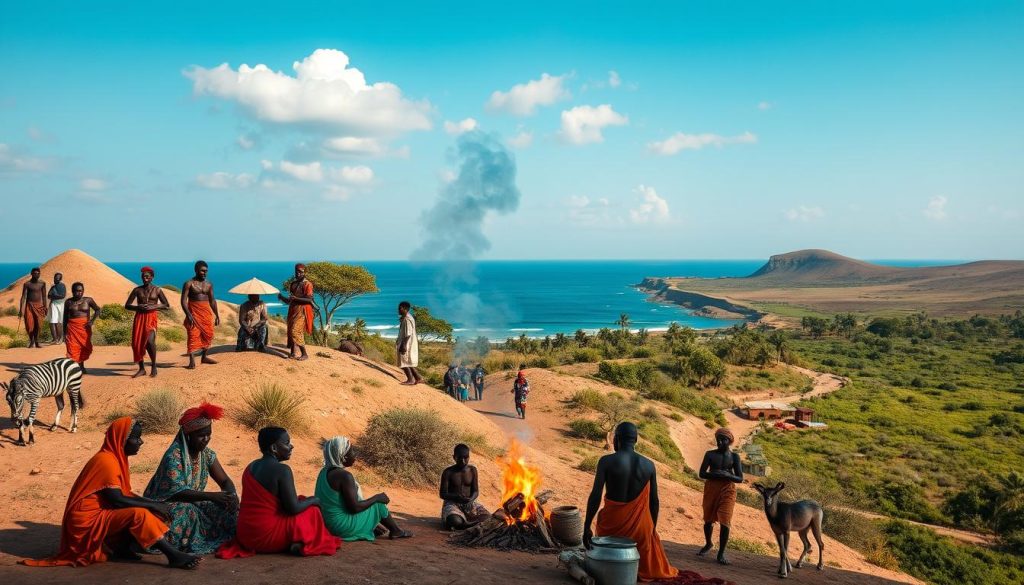
Djibouti is at a key moment in saving its rich language heritage. It has six native languages, each belonging to different groups. Keeping Somali and Afar languages alive is vital for the country’s culture and unity.
Important efforts to save these languages include:
- The Regional Somali Language Academy, started in 2013
- Work on making the Afar alphabet official
- Language documentation programs backed by the government
- Workshops on culture for the young
“Language is the roadmap of a culture. It tells you where its people come from and where they are going.” – Rita Mae Brown
The challenges are huge. Fast modernization and global trends put native languages at risk. Experts say about 40% of languages worldwide might disappear, with African ones especially at risk.
| Language | Speakers | Preservation Status |
|---|---|---|
| Somali | Major population | Active preservation efforts |
| Afar | Approximately 2 million | Moderate preservation initiatives |
Your help matters. By spreading the word about languages, joining cultural events, and backing local efforts, you help keep Djibouti’s language diversity alive.
Communication Challenges and Solutions
In Djibouti, overcoming language barriers is key. This country, with its high urban population, faces special challenges. It needs new ways to talk across different groups.
Urban-Rural Language Dynamics
Djibouti’s language scene is complex. Cities have more language variety than rural areas. The main hurdles include:
- Limited language resources in rural communities
- Uneven access to multilingual education
- Technological disparities between urban and rural populations
Multilingual Education Strategies
To tackle these issues, Djibouti is focusing on education. It’s creating programs that:
- Use many official languages in school
- Teach translation and interpretation
- Make learning materials for local languages
Technology and Language Access
Technology is changing how people talk in Djibouti. Apps, online translators, and digital classes are helping.
“Language is the road map of a culture. It tells you where its people come from and where they are going.” – Rita Mae Brown
| Language Technology Solution | Impact on Communication |
|---|---|
| Translation Apps | Instant multilingual communication |
| Online Learning Platforms | Accessible language education |
| Digital Language Resources | Expanded linguistic knowledge |
Djibouti is using tech and education to improve communication. It’s making progress in talking across languages.
Conclusion
Djibouti’s language journey is a story of cultural strength and communication. It shows how a small country can keep a lively mix of languages. French and Arabic are official, showing Djibouti’s skill in linking past and present.
The language scene in Djibouti is more than talking—it’s a social world. Most people live in cities, where speaking two languages is common. This skill helps them in the world while keeping their culture alive with Somali and Afar.
Djibouti’s language plans are key for its growth. The government is working on bilingual education and keeping culture alive. This way, language diversity becomes a strength for unity and progress.
Learning about Djibouti’s language journey teaches us about language’s power. It shows how language shapes identity and connects us globally. It’s a reminder of language’s role in culture and communication.
The above is subject to change.
Check back often to TRAVEL.COM for the latest travel tips and deals.
Here are some Tours & Sightseeing suggestions that might pique your interests!
